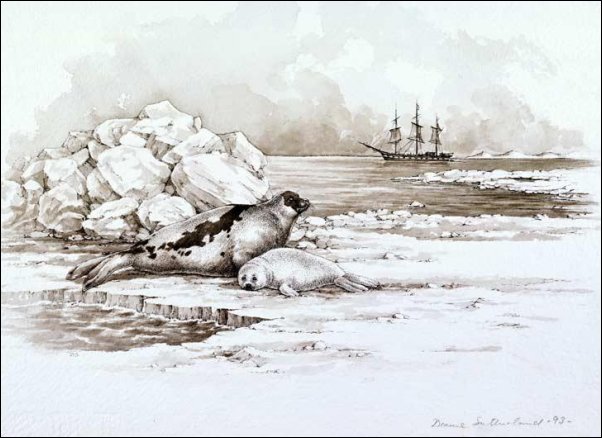|
Sealing became a popular pursuit for the whaling fleet. Harp seals,
which basked on the ice floes in huge numbers during the spring
were shot and taken for their blubber oil and skins. The gregarious
females give birth to a single pup on newly formed pack ice in mid-February
to April, depending upon location. The young are fed on rich milk
for c. 12 days during which time they grow from 11 to 38 kg.
In
1852 captain Sellar of the whaler Agostina took 9852 seals. With
22 ships from Peterhead alone at the sealing that year it is not
hard to see why seal numbers rapidly declined in the second part
of the century.
In
1876 Captain David Gray reported "twenty years ago a pack of seals
would have extended in every direction as far as could be seen.
Now a pack rarely exceeds a twentieth part of the size."

©SCRAN/Aberdeenshire
Council
Harp seals
|
|